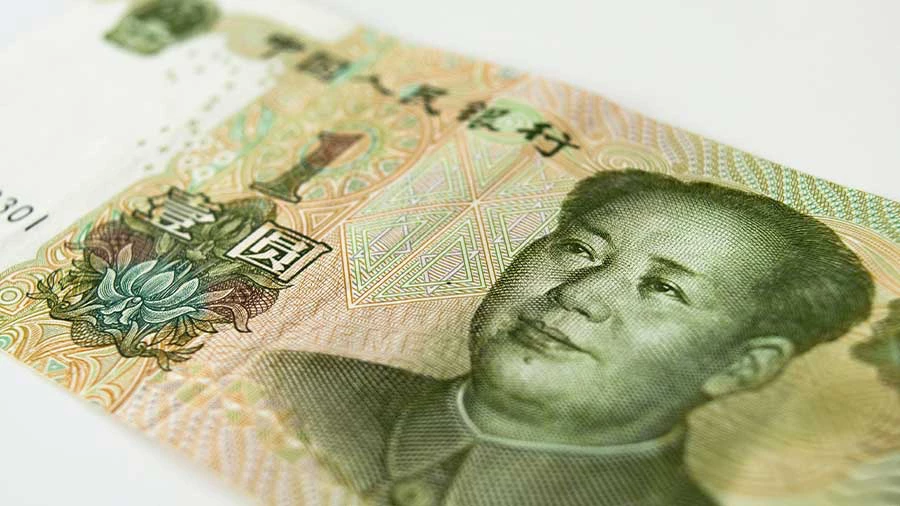In an effort to boost economic growth, the Chinese government has extended a series of tax policies first implemented during the COVID-19 pandemic, adding to the existing long-term policies to support industry growth and innovation. We provide an overview of some of the preferential tax policies available to manufacturing companies in China, including policies to reduce the tax burdens of smaller companies, tax incentives to increase innovation and investment, and region-specific corporate income tax reductions.
China’s manufacturing sector remains one of the most important drivers of the country’s economic growth. As China emerges from the pandemic, the government is seeking to boost the industry’s development by highlighting the preferential and support policies that reduce tax and fee burdens on companies in this sector.
In addition to existing long-term preferential tax policies, China has recently extended COVID-era preferential tax policies that were due to expire at the end of 2023 to 2027. Many of these policies are also applicable to manufacturing companies of various sizes.
In this article, we highlight some of the preferential tax and fee policies that are currently available to manufacturing companies, including reductions to CIT and VAT, as well as various fee and expense deductions. Note that many of these policies may be available to companies in other industries as well.
Tax incentives for small and low-profit manufacturing companies
China has extended a raft of preferential tax policies aimed at supporting small and low-profit businesses in 2023.These policies are applicable to small and low-profit companies in all industries. However, due to the relatively low eligibility threshold for sales volume and profits, in the manufacturing industry, they will mostly be applicable to light manufacturing companies that produce smaller amounts of consumer-oriented products.
The preferential policies for small and low-profit enterprises are summarized in the table below.
| Policy | Eligible companies | Policy details | Timeline |
| Reduced CIT rate for SLPEs |
|
Reduced 20 percent CIT rate | January 1, 2022/2023 to December 31, 2027 |
| Reduced individual income tax (IIT) | Individually-owned businesses | 50 percent reduction of payable IIT amount for the portion of taxable income not exceeding RMB 1 million (approx. US$152,800) | January 1, 2023 to December 31, 2027 |
| Reduction of “six taxes and two fees” for small-scale taxpayers | Small-scale VAT taxpayers, SLPEs, and individually-owned businesses | Reduced 50 percent levy rate for:
|
January 1, 2022 to December 31, 2027 |
| Note: The above list is not exhaustive. | |||
Preferential VAT and premiums reduction policies
The Chinese government has extended a series of VAT credit refund policies and insurance premium reduction policies that were first implemented before or during the pandemic.These include exemptions and reductions of VAT for small-scale taxpayers with monthly sales of under RMB 100,000 (approx. US$14,740) and reduction of employment security fund payments for disabled persons.
For context, companies in China have a minimum quota of disabled employees that they must hire, which differs from province to province. Companies that don’t meet this quota have to pay into a fund called the Baozhang Jin (保障金). The necessary amount again varies according to location, but the majority of companies choose to pay into the fund rather than employ the requisite number of disabled workers that would absolve them from paying.
See our article on hiring disabled staff members in China for more information.
| Policy | Eligible companies | Policy details | Timeline |
| Exemption and reduction of VAT |
|
|
January 1, 2023 to December 31, 2027 |
| VAT refund policy for enterprises in industries including manufacturing, wholesale, and retail | Qualified companies in the manufacturing industry. | Application for a one-time refund of accumulated deferred tax credits. | For micro-enterprises: tax declaration period of April 2022
For small enterprises: tax declaration period of May 2022 For medium-sized enterprises: tax declaration period of May 2022 For large enterprises: tax declaration period of June 2022 |
| End-of-period VAT deduction from the tax basis of certain taxes and fees | General taxpayers implementing VAT refunds at the end of the period. | Deduction of the refunded VAT amount from the tax calculation basis of the urban maintenance and construction tax, education surcharge, and local education surcharge. | From July 27, 2018 onward |
| Phased reduction of social insurance premiums | Employers participating in unemployment insurance. | Phased reduction of the unemployment insurance premium rate to 1 percent (the employer-employee payment ratio is set by each province, e.g., in Guangdong, employers pay 0.8 percent and employees pay 0.2 percent). | End of 2024 |
| Reduction of employment security fund payments for disabled persons | Companies that meet the requisite disability employment ratios. |
|
January 1, 2023 to December 31, 2027 |
| Note: The above list is not exhaustive. | |||
Reduced CIT rate in key development zones
Several key development and free trade zones (FTZs) in China offer a reduced 15 percent CIT rate for companies in encouraged industries (China’s standard CIT rate is 25 percent). Each development zone has its own local rules regarding the industries that can enjoy the preferential CIT rate, as well as requirements for the minimum size of operations within the area to be eligible.The development zones offering the reduced 15 percent CIT rate for companies in various manufacturing fields are summarized in the table below.
| Eligible Industries and Requirements for 15% CIT Rate | |||
| Zone | Eligible industries | Latest catalog of encouraged industries | Effective period |
| Lingang New Area (Shanghai) | Integrated circuits:
|
Catalog of Core Links in the Key Fields of Integrated Circuits, Artificial Intelligence, Biomedicine, and Civil Aviation | January 1, 2020 - no end date (companies can enjoy the preferential policy for up to five years from the date of establishment in the area) |
| Fujian Pingtan (Fuzhou) | Certain types of manufacturing in the following industries:
|
Catalog of Encouraged Industries Eligible for CIT Preferential Treatment (2021 Edition) | January 1, 2021 to December 31, 2025 |
| Hengqin Cooperation Zone (Zhuhai) | Manufacturing in industries including:
|
Hengqin Guangdong-Macao Deep Cooperation Zone Corporate Income Tax Preferential Catalog (2021 Edition) | January 2021 - no end date |
| Nansha Economic Zone (Guangzhou) | Manufacturing in industries including
|
Nansha Guangzhou Preferential Corporate Income Tax Catalog (2022 Edition) | January 1, 2022, to December 31, 2026 |
| Hainan FTP (Hainan) | 27 manufacturing fields in the Hainan Free Trade Port Encouraged Industries Catalogue (2020 Edition), including in biomass materials, cosmetics, new energy vehicles, and medical devices.
Manufacturing industries included in the latest editions of the national Guiding Catalogue for Industrial Structure Adjustment and Catalogue of Encouraged Industries for Foreign Investment |
Hainan Free Trade Port Encouraged Industries Catalog (2020 Edition)
Guiding Catalog for Industrial Structure Adjustment (2019 Edition)
Catalog of Encouraged Industries for Foreign Investment (2022 Edition) |
January 1, 2020 to end 2025 (Hainan Free Trade Port Industries Catalog in effect until December 31, 2024) |
| Western regions | Certain manufacturing industries in the following regions:
|
Catalog of Encouraged Industries in the Western Region
Guiding Catalog for Industrial Structure Adjustment (2019 Edition)
Catalog of Encouraged Industries for Foreign Investment (2022 Edition |
January 1, 2021 to December 31, 2030 |
| Note: All eligible industries are listed in detail in the respective catalogs. | |||
In most cases, companies must be able to prove that they have “substantial operations” in an eligible industry within the development zone itself. For more information on the requirements for substantial operations, see our dedicated article here.
Preferential policies to encourage innovation
There are several long-standing preferential policies to boost investment in technological development and upgrading that are applicable to manufacturing companies.These include VAT and CIT policies encouraging technology transfer, as well as a pre-tax super deduction for R&D expenses.
Earlier this year, China extended the R&D super deduction indefinitely. Under the policy, companies can deduct an additional 100 percent of the actual amount of R&D expenses before tax, provided that they do not form intangible assets and are included in the profits and losses of the current period. This in effect means that companies can deduct a total of 200 percent of their R&D expenses before tax, resulting in lower corporate income tax (CIT) payable for a given tax year.
For more information on this policy, see our dedicated article here.
| Policy | Eligible companies | Policy details | Timeline |
| VAT exemption for technology transfer, technology development, and related technical consultation and technical services | VAT payers who provide technology transfer and technology development. | VAT exemption for technology transfer, technology development, and related technical consultation and technical services. | From May 1, 2016 onward |
| CIT reduction and exemptions for qualified technology transfer income | Resident enterprises engaged in technology transfer. | Within a given tax year:
|
From 2015 onward |
| Pre-tax super deduction of R&D expenses | Resident enterprises with sound accounting, audit collection, and accurate collection of research and development expenses, except countries in industries on the negative list. |
|
From January 1, 2023 onward |
| Tax incentives for encouraging investment in basic research | All companies. |
|
From January 1, 2022 onward |
| Tax incentives to encourage equipment upgrades | All manufacturing companies. | 1. Manufacturing enterprises in the following industries can opt to either shorten the depreciation period or adopt an accelerated depreciation method for fixed assets acquired after January 1, 2014:
|
|
| Note: The above list is not exhaustive. | |||
Policies to encourage investment
There are several preferential tax policies in place to encourage investment in innovative companies, including policies aimed specifically at venture capital (VC) firms and their employees. Many of these policies are directed specifically at technology-based startups, as well as foreign investors.Among them is an exemption of withholding tax for all non-restricted foreign investment projects and sectors on profits distributed from Chinese resident enterprises to overseas investors for domestic direct investment.
Policies directed at VC firms include deductions of their investments from their taxable income. For more information on China’s startup environment and preferential policies for VC investment, see our dedicated article here.
| Policy | Eligible companies/individuals | Policy details | Timeline |
| Deferral of withholding tax on equity investment incomes that are re-invested in non-prohibited sectors | Non-resident enterprises | Qualified non-resident enterprises can defer withholding tax as long as they reinvest equity investment incomes, such as dividends and bonuses derived from resident enterprises directly into projects and sectors not prohibited for investment. | From January 1, 2018 onward |
| Preferential Tax Policies for Venture Capital (VC) | VC companies | VC enterprises that invest in unlisted small and medium-sized high-tech enterprises through equity investment for a period of two years (24 months) or more, and meet the qualifying criteria, can deduct 70% of the investment amount in the companies from their taxable income in the year when the equity holding reaches 2 years. Any remaining deduction that cannot be utilized in the current year can be carried forward and offset in subsequent tax years. | From 2009 onward |
| Deduction of investments in startup technology-based enterprises from taxable income
|
Corporate VC enterprises | Enterprises that employ an equity investment approach to directly invest in eligible seed-stage and early-stage technology-based enterprises for a duration of at least 24 months can deduct 70% of the investment amount from their taxable income in the year when the equity holding reaches 24 months. Any remaining deduction that cannot be utilized in the current year can be carried forward and offset in subsequent tax years. | From July 1, 2018 onward |
| Deduction of taxable income for angel investors investing in early-stage technology-based enterprises
|
Angel investors investing in early-stage technology-based enterprises
|
Angel investors who directly invest through equity investment in eligible early-stage technology-based enterprises for a period of at least two years can deduct 70% of the taxable income obtained from the transfer of equity in those enterprises.
Any remaining deduction that cannot be utilized in the current period can be carried forward and offset against taxable income obtained from the transfer of equity in the same enterprise in the future. |
From July 1, 2018 onward
|
| Note: The above list is not exhaustive. | |||
Identifying and applying China’s preferential tax policies
China offers myriad preferential policies for companies in various industries. In addition to the policies listed above, the government provides a range of preferential tax policies to help companies attract manufacturing talent and make the transition to green and low-carbon technology and practices.Moreover, individual provinces and development areas may implement local tax and fee policies aimed at attracting and growing specific industries. Manufacturing, as one of China’s most important drivers of GDP growth, is frequently the target of local support measures, which may also include preferential treatment other than tax policies.
Given the variety of policies available, as well as the varying eligibility and application criteria, identifying and assessing eligibility for these tax policies can be difficult. Foreign companies may also wish to assess where preferential policies are available and for how long before entering the China market or expanding to a new area.
If your business needs assistance assessing which preferential policies it is eligible for, you can consult our tax experts by contacting china@dezshira.com.
























